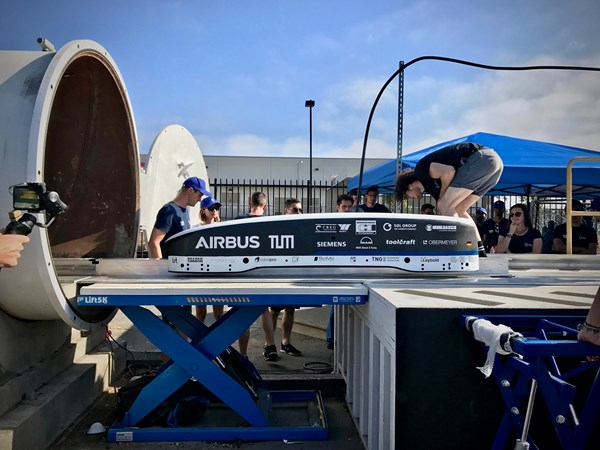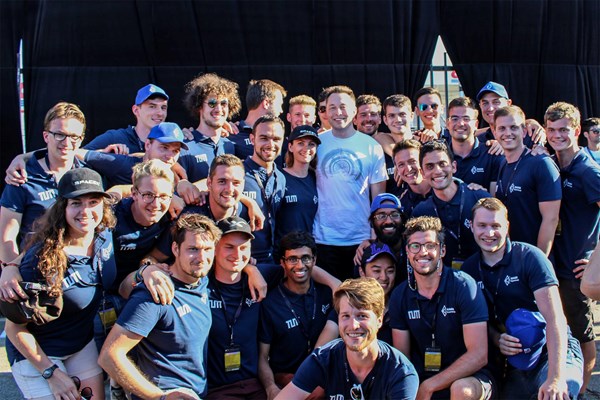German students win second SpaceX Hyperloop competition
Student group from the Technical University of Munich sets new Hyperloop speed record and wins second SpaceX Pod Competition.

WARR Hyperloop on Competition Day.
The second SpaceX Hyperloop Pod Competition took place in August and the winner featured a top speed of 324 km/h—the fastest speed ever reached by a Hyperloop pod. The winning team, WARR Hyperloop, represents the Technical University of Munich and its Scientific Workgroup for Rocketry and Space Flight (WARR).
Three teams were given clearance to race their prototype through the tube on competition day to compete for the title of the fastest pod: Paradigm Hyperloop from Northeastern University and Memorial University of Newfoundland, Swissloop from ETH Zurich and the WARR Hyperloop team of the Technical University of Munich. WARR Hyperloop features carbon fiber-reinforced plastics with a sandwich-structured main frame with a foam core and an unidirectional fiber layout in the propulsion structure to support the belt pretension and prevent buckling. The combined weight is less than 20kg.
Welcome! You’ve unlocked premium content.
In the first competition earlier this year, WARR Hyperloop won the category for fastest pod. For the second competition, Elon Musk, founder of SpaceX and Tesla and initiator of the SpaceX Hyperloop Pod Competition, set a clear criterion: the fastest pod wins. Six months ago, the WARR Hyperloop team set to work overhauling its previous prototype and produced a very different and significantly lighter version that, for the first time, had its own propulsion system.
The 1.25 km test tube adjacent to SpaceX headquarters in Hawthorne, Los Angeles has been built specifically for the Hyperloop Pod Competition. The tube is depressurized, reducing air resistance during the high-speed run. With the team gathered round control tent at the tube end, and after waiting 15 minutes for air to be removed from the tube, WARR Hyperloop operators performed a successful launch sequence and the preprogrammed control sequence took over. The pod continued to accelerate for a full three quarters of the tube length, and after reaching 324 km/h the brakes kicked in to stop the pod in around three seconds.
Here's the run of the WARR Hyperloop Team on the second SpaceX Hyperloop Pod Competition:
The Hyperloop mobility concept was introduced by Elon Musk in 2013 with his Alpha Study. The original concept described levitating high-speed trains traveling through a vacuum tube at approximately the speed of sound (around 700 mph). These tubes would be used to connect large metropolis regions and allow faster and more efficient traveling in comparison to today's means of transportation.
Technical University of Munich (TUM), has around 200 student members active in all fields of astronautics and is internationally successful with its varied projects. Besides the latest Hyperloop project, the group has over 50 years experience developing rockets, building satellites and designing Space Elevators.
Congrats to the WARR Hyperloop team!

The winning team with Elon Musk in the middle.
Related Content
-
Plant tour: Albany Engineered Composites, Rochester, N.H., U.S.
Efficient, high-quality, well-controlled composites manufacturing at volume is the mantra for this 3D weaving specialist.
-
Combining multifunctional thermoplastic composites, additive manufacturing for next-gen airframe structures
The DOMMINIO project combines AFP with 3D printed gyroid cores, embedded SHM sensors and smart materials for induction-driven disassembly of parts at end of life.
-
Plant tour: Joby Aviation, Marina, Calif., U.S.
As the advanced air mobility market begins to take shape, market leader Joby Aviation works to industrialize composites manufacturing for its first-generation, composites-intensive, all-electric air taxi.
















